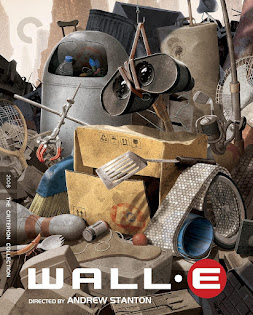The question I keep asking myself is: should storytelling be compromised by production costs, ecological trends, or global warming? Undoubtedly, there isn't a single answer to that, because every artist has a myriad of attitudes toward his methodology, but in my opinion, now is a good time to reinvent our positions as artists and question our practices. We often take our work environment for granted and don’t think about the consequences of its unification. After all, it took years to perfect a structure and hierarchy in film productions and it is hard to crack this system and recreate a sustainable environment in a jiff. But the fact is that a film set on average produces about 347 tons of waste for each film which is the equivalent of how much garbage would a typical American individual produce in three lifetimes. Anyone not American reading this can take this information lightly because, in terms of population, the US generates the most waste per person. Having said that, I don’t mean to exclude or point fingers at anyone, because it is up to each of us individually to make a difference and I hope this reading will inspire you to do so. So, yes, I feel I am slowly getting closer to formulating my answer to the aforementioned question; at present, while writing this from my darkened 28 degrees Celsius living room, I think it is indispensable that we start to change our cozy work milieus. What’s more, I’d say we are slowly, but anxiously beginning to feel the consequences when it comes to set safety and turmoil in filming locations, but ultimately daily work which has become arduous because of extreme climate deviations. One way or another, the joke is on us, because our way of life is intoxicating us in so many ways: from microplastic intake and spreading diseases to stressing countless ecosystems that thinking about the future has become more disturbing than watching an episode of "Black Mirror". Let's face it, climate change will not choose to overlook the film industry, just because of "Wall-E: A Portrait of Earth’s Grim Future". I hope you don’t take this the wrong way, I am a big fan of the film, I am just slightly unconvinced that mingling eco-friendly and mass merchandising is a good couple, but certainly, Eve and Wall-E make a better one.
Then
again, as an animator, working with small film crews, I am aware that my
position is much more flexible in comparison to filmmakers who work on big film
sets, nevertheless I believe we can all strive towards a reduction and
minimization of our collective waste-abundant habits. Bertold Brecht was trying
to change classical approaches in theater 70 years ago with his Verfremdungseffekt, a.k.a.
"the distancing effect" and although this was purely intellectual, I can
appreciate an early sense of ecology in his working method. Namely one of his
techniques was the minimal set, costumes, props, and lighting, which in effect
predetermined that sets should not be realistic, but suggestive, and actors
should use minimal props in several different ways. I believe this invitation
to look at something familiar in a new way was paving the way for a sustainable
approach that could be applied to film-making as well, but unfortunately,
Brecht's work was mainly influential in the 50s and 60s and didn’t stick, at
least not in the mainstream film industry.
I wonder if this is on account of the expressive
contextualization which was never a thing for the mass audience, or just the
sheer laziness of the average spectator, who won’t give in and surrender to a
story outlined as a skeleton but instead needs the whole body for maximum
satisfaction. Lars von Trier made a breakthrough in his own way with “Dogville”
where as well as the life of the protagonist, the set was correspondingly
reduced to a crude minimum. For me, this is another fine example of a filmmaker
going beyond the predetermined industry standards and taking a brave leap into
unexplored territories. Perhaps it is important to mention that Lars von Trier,
together with Thomas Vinterberg was the pioneer of the independent
movement Dogme
95, which aimed to impose new, fresh values upon
film-making, thus rebelling against the expanding commercial cinema
structures. Numerous authors who took part in the new wave cinema applied
Brechtian principles in their films, but audiences didn’t always receive these
values with arms wide open.
The Brechtian set location for Lars von Trier's Dogville.
Inspired
by all those brave cinematic attempts, I tried to do a similar thing in my
master’s animated film “Soma” where the set and puppets were just outlined
contours made out of recycled metal, but in my opinion, my story was not
refined enough to be understood so clearly, so the reference of an object to
something else was over-stimulative. Nevertheless, I think experimenting with
style also gives depth to storytelling, so I encourage anyone who is a beginner
in the field to exploit what is around them while searching for their own
language of expression. This can be more inspiring as an exercise because it
creates a certain framework, rather than starting anew and creating expensive
monumental sets that are possibly going to end up floating in the middle of the
ocean, as might also be the case with an overambitious film. A kind reminder: this text really wants to inspire, instead
of condemn, so please read well and have fun.







